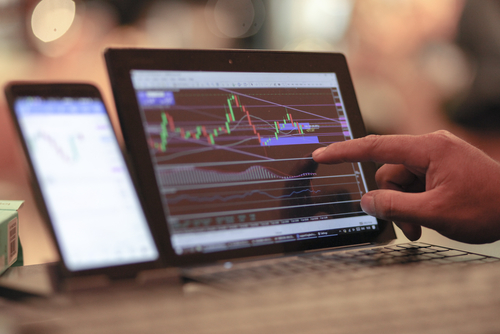You can exercise control and self control when trading, two concepts which will have a tremendous impact on the progress you make as a forex trader. Using the various controls you have to trade will ultimately determine your success. It would be delusional to believe you can control market behaviour, similarly it would be fantasy to imagine that you can always predict market direction correctly. Once you accept these irrefutable facts you can begin to develop a long-term successful strategy.

Entries and exits
A forex trader can control when they enter a trade and when they exit. They can also choose to stay out of their chosen markets until the conditions are right, in order to justify entering the market.
What markets to trade
A trader can choose what markets to trade and how many securities to trade. Do you decide to trade FX exclusively, or do you trade equity indices and commodities also? Do you only trade the major FX pairs? The choices and the control you exercise at this juncture will be critical to your outcomes. You must avoid over-trading and revenge trading. Trying to manage too many trades in too many markets can prove to be disastrous, as can trying to win back your losses by way of revenge trading. The forex markets do not care if you win or lose, making the process personal can be extremely damaging.
Risk
You can choose to limit your risk by way of using stops. The control this offers up is one of the most valuable tools you have at your disposal. Only risking a small percentage of your account on each trade can ensure you don’t blow up during your novice, fledgling, trading education.
Position sizing
You can decide to use the various position size calculators you’ll see online in order to establish what lot size you can employ based on the percentage of your account you want to risk on each individual trade. This free tool, which the majority of honest brokers promote, provides an exceptional method of control.
The indicators you prefer to use
You can control and choose which and how many technical indicators you use. This personalisation of your method and trading strategy offers up the ability to construct a plan and control how you communicate with the market in a highly personalised manner, providing you with a significant level of control.
You can control your emotions
Controlling you emotions and ensuring you stick to your trading plan is one of the most essential factors to ensure you’re giving yourself every chance of success. You must introduce elements of automation to many aspects of your trading. The basic forms of automation such as stops, limits and automated entries will deliver you elements of control.
You can control you loss per day and apply a circuit-breaker
You should set yourself a daily loss and if you reach the loss you should stop trading immediately. If you theoretically lose 0.5% on a series of four trades, your self-imposed daily loss limit is 2% and you reach it, then you know you’ll still be able to trade the next day. Similarly, if you have perhaps three losing days in series then the total loss of 6% will hurt, but it won’t irrevocably ruin your chances of becoming a successful trader. You have two options if the 6% drawdown is reached; you could simply continue with your current strategy after you decide that the market is temporarily not in tune with your method. Alternatively you could use the hypothetical 6% loss to radically alter your method and strategy.
You can control your trading by stopping trading
You can’t lose if you don’t trade. The ultimate control you have is to exercise self-discipline and decide not to trade. You can decide not to take a trade because it doesn’t comply with your plan. You can opt out of a trading session because a calendar event may cause exceptional volatility. You can also take a vacation from the market after incurring losses, go back to demo, perfect your method and strategy and come back to the profession refreshed and reenergised.


